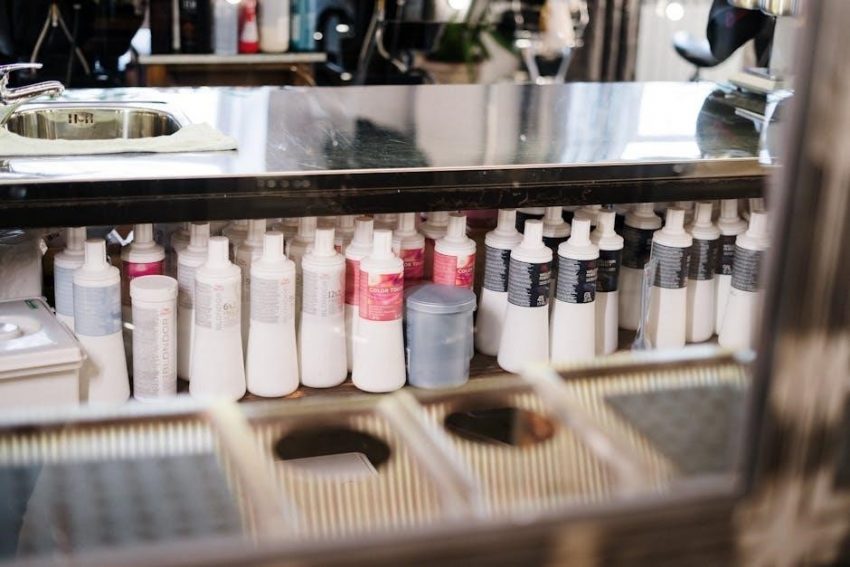Preparation for a Bleach Bath
Begin by gathering gloves, goggles, a towel, and protective clothing. Conduct a strand test to ensure desired results and check for allergies. This step is crucial for safety and effectiveness.
- Gather necessary items: gloves, old towel, protective clothing, and a plastic cape.
- Conduct a strand test: apply bleach to a small section of hair to assess color change and potential damage.
Gather Necessary Items and Protective Gear
Start by collecting essential items like gloves, goggles, an old towel, and protective clothing. Use a plastic cape to shield your skin and clothes from stains. Ensure you have a strand test kit ready to check for allergic reactions. These precautions are vital for a safe and successful bleach bath experience. Proper preparation prevents accidents and ensures optimal results.
- Gloves protect hands from harsh chemicals.
- Goggles safeguard eyes from splashes.
- Old towels and clothing prevent damage from bleach.
Conduct a Strand Test
Before applying the bleach bath to your entire head, perform a strand test on a small section of hair. This step ensures the desired color result and checks for potential damage or allergic reactions. Apply the bleach mixture as instructed, monitor the processing time, and evaluate the outcome. Adjust the formula or timing if necessary to achieve the best results for your hair type and color.
- Select a small, discreet section of hair for testing.
- Apply the bleach mixture and monitor closely for the recommended time.
- Evaluate color change, condition, and any allergic reactions.
Mixing the Bleach Solution
Combine equal parts bleach and developer, typically 25ml each, to create a balanced mixture. Add shampoo, roughly double the volume of the bleach-developer mix, to dilute the solution for gentler application. Ensure the mixture is well-integrated before applying to wet hair. Always prioritize ventilation and wear protective gear to handle the chemicals safely. Adjust the developer strength based on hair type and desired lightening effect, and avoid mixing with other household chemicals to prevent harmful reactions.
Understanding Correct Proportions
Mix equal parts bleach and developer, typically 25ml each, to achieve a balanced solution. Add shampoo, roughly double the volume of the bleach-developer mix, to dilute the treatment. This ensures a gentler application while maintaining effective lightening. Avoid excessive bleach concentration to prevent damage. Proper proportions are crucial for even color distribution and minimizing hair stress. Always follow the manufacturer’s guidelines for safe and effective results.
Adding Shampoo for a Gentler Treatment
Mixing shampoo with the bleach solution creates a gentler treatment. Combine equal parts shampoo with the bleach-developer mixture to dilute its strength. This method reduces damage and is ideal for sensitive or already processed hair. The shampoo helps maintain moisture balance while still achieving a subtle lift or tone. It’s a safer option for those seeking a less intense bleach bath experience without compromising results. This technique is highly recommended for damaged or fragile hair.
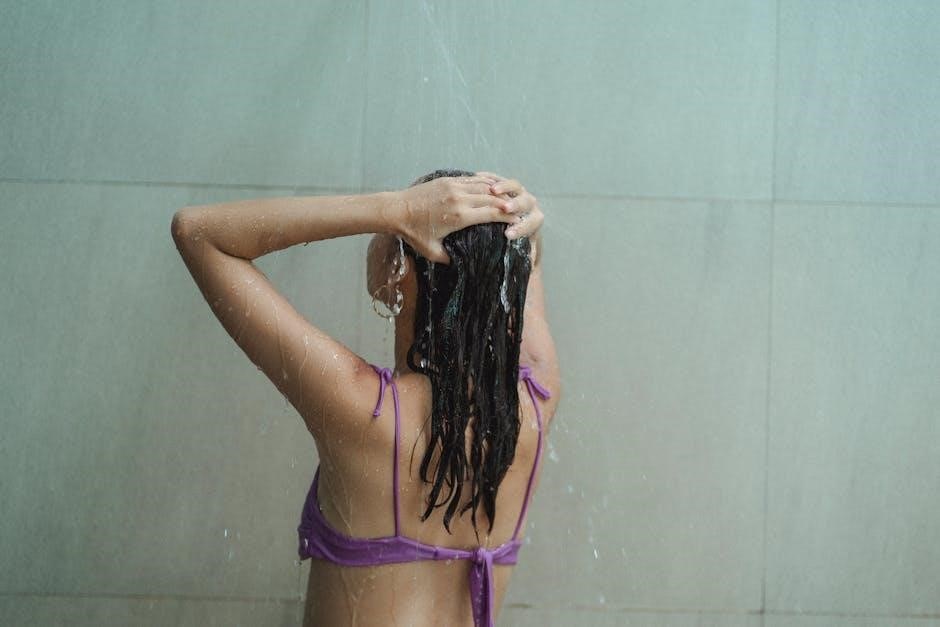
Application Technique
Apply the bleach bath mixture evenly, starting at the ends and working up to the roots. Wear gloves and use a tint brush for precise application.
How to Apply the Bleach Bath
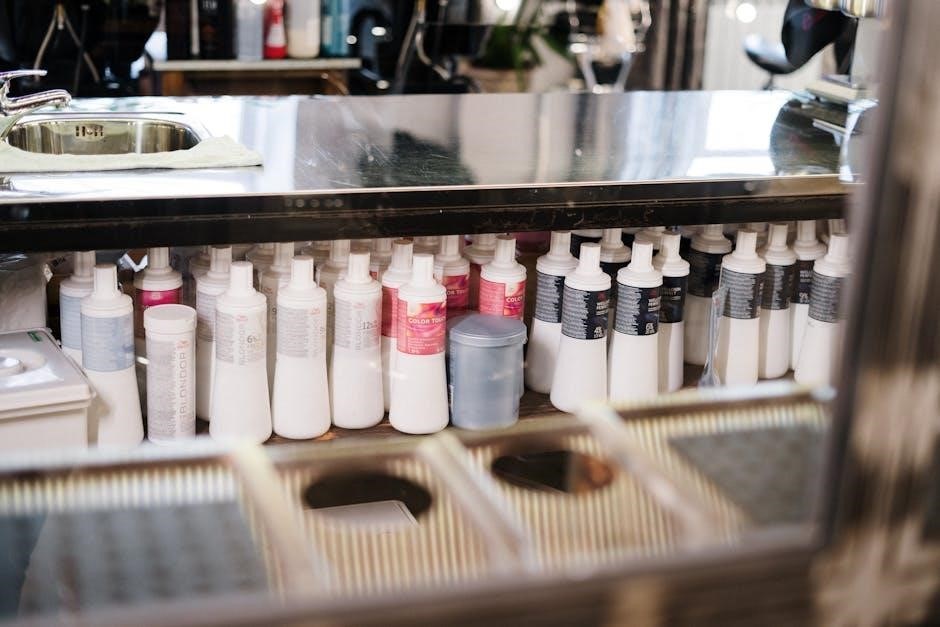
Apply the bleach bath to damp hair using a tint brush for even distribution. Start at the ends and work upward, avoiding the roots initially. Process for 20-45 minutes, checking regularly for desired results. Rinse thoroughly with warm water after processing. Always wear gloves and protective clothing to prevent stains and skin irritation. For best results, follow the instructions carefully and consult a professional if unsure.
Protecting Clothing and Skin from Stains
Wear old, protective clothing and a plastic cape to shield against bleach splatters. Apply petroleum jelly around the hairline, ears, and neck to prevent skin staining. Use gloves to protect hands from irritation. Cover work surfaces with newspaper or a plastic tablecloth to contain spills. Ensure good ventilation to avoid inhaling fumes. These precautions minimize risks and make cleanup easier after the bleach bath process.
- Protective gear: gloves, cape, and old clothing.
- Skin protection: petroleum jelly on sensitive areas.
- Surface protection: cover surfaces with newspaper or plastic.
Processing Time and Monitoring
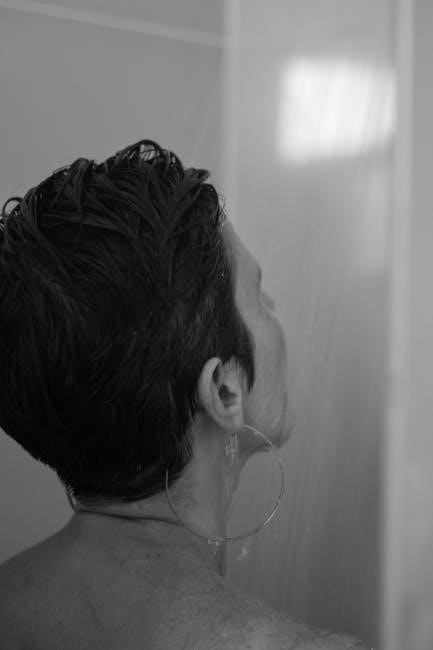
Processing time varies based on hair type, porosity, and initial color. Monitor every 5-10 minutes to avoid over-processing and achieve desired results safely and effectively;
- Timing: Adjust based on hair type and color.
- Monitoring: Check progress regularly to prevent damage.
Timing Based on Hair Type and Color
Processing time varies depending on hair type and starting color. Virgin hair may take longer, while previously colored hair lifts faster. Fine or damaged hair requires less time, while coarse hair needs more. Porosity also affects duration—high porosity hair processes quicker. Generally, bleach baths take 20-45 minutes. Always monitor progress to avoid over-processing and achieve the desired shade without damaging your hair.
- Virgin hair: Longer processing time due to intact cuticle layer.
- Colored hair: Shorter time as pigment is already lifted.
Regularly Checking for Desired Results
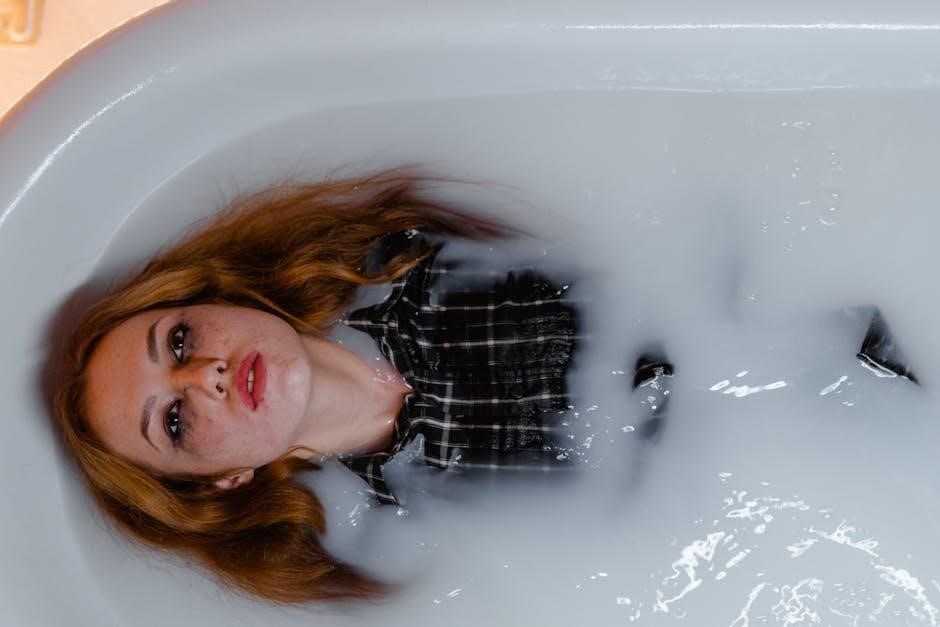
Check your hair every 5-10 minutes during processing by rinsing a small section to gauge color lift. Use a tint brush to section and inspect strands. If desired shade is achieved, rinse immediately to prevent over-processing. This step ensures personalized results and avoids damage. Always prioritize cautious monitoring for optimal outcomes.
- Section hair: Use clips or a tint brush to isolate strands for easy inspection.
- Rinse a test strand: Apply water to a small section to check color progress without stopping the process.
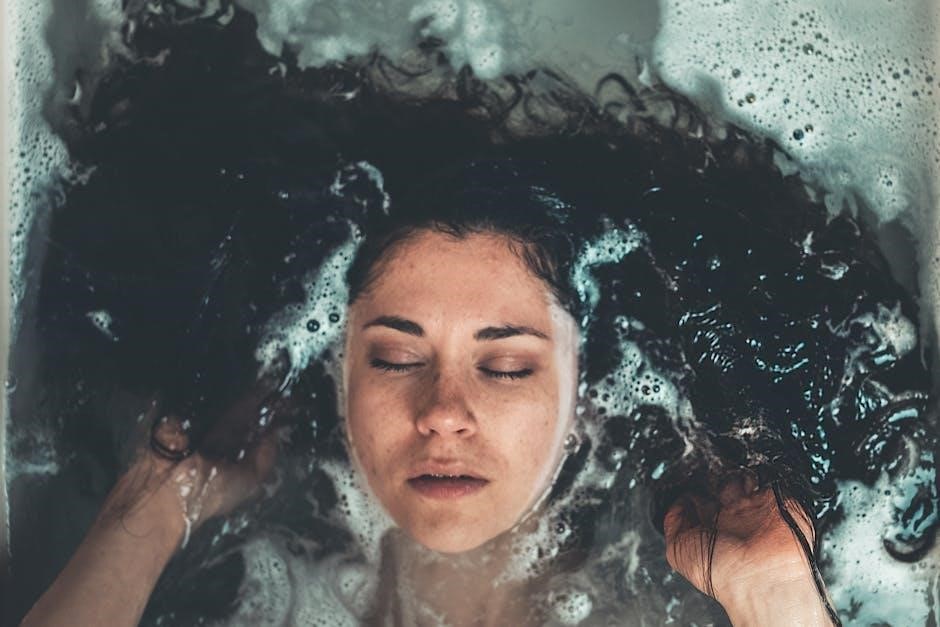
Rinsing and Aftercare Routine
Rinse thoroughly with warm water to remove all bleach residue. Apply conditioner to restore moisture and shine. Follow with a deep conditioning treatment to repair hair health.
- Rinse completely: Ensure no bleach remains to avoid further damage.
- Apply conditioner: Focus on ends to replenish moisture and reduce brittleness.
Thorough Rinsing to Remove Bleach Residue
After processing, rinse your hair thoroughly with warm water until the water runs clear. This step is critical to remove all bleach residue and prevent further damage. Leaning over a sink, tilt your head to ensure no bleach touches your face or skin. Use a gentle, massaging motion with your fingers to rinse from roots to ends. Repeat if necessary until no suds remain. For extra cleansing, consider using a clarifying shampoo to eliminate any lingering residue.
- Use warm water: Rinse until water is clear to ensure all bleach is removed.
- Massage gently: Work from scalp to ends to eliminate residue effectively.
Deep Conditioning to Restore Hair Health
Post-bleach, apply a deep conditioning treatment to restore moisture and repair damage. Use a high-quality conditioner and leave it on for 15-30 minutes. For enhanced benefits, cover your hair with a warm towel or a shower cap. After rinsing, apply a leave-in conditioner or hair serum to lock in hydration and reduce frizz. Regular deep conditioning sessions will help maintain healthy, vibrant hair.
- Apply conditioner: Use a generous amount, focusing on ends, which are most prone to damage.
- Moisturize thoroughly: Leave the treatment on longer for deeper repair and hydration.
Safety Precautions and Best Practices
Always wear gloves, goggles, and protective clothing. Ensure good ventilation to avoid inhaling fumes. Never mix bleach with ammonia or acids to prevent toxic gases. Keep flammable liquids away from the area during the process.
- Wear protective gear: Gloves and goggles are essential for skin and eye protection.
- Ensure ventilation: Open windows to avoid inhaling bleach fumes.
- Avoid mixing: Never combine bleach with ammonia or acids.
Wearing Protective Gear
Protective gear is essential to prevent skin and eye irritation. Wear gloves to shield your hands from bleach exposure. Goggles will protect your eyes from accidental splashes. Old clothing or a plastic cape can prevent stains on your clothes. These precautions ensure a safe and controlled bleaching process.
- Gloves: Prevent harsh chemicals from irritating your skin.
- Goggles: Protect eyes from bleach splatters.
- Old clothing: Avoid staining your favorite clothes.
- Plastic cape: Provides extra protection for your clothing.
Ensuring Proper Ventilation
Proper ventilation is crucial when performing a bleach bath to avoid inhaling harsh fumes. Open windows and use a fan to circulate air. Work in a well-ventilated area to prevent the buildup of strong chemical smells. This helps maintain comfort and safety during the process. Avoid breathing in bleach fumes, as they can cause respiratory irritation. Good airflow also helps prevent dizziness or discomfort.
- Open windows: Allow fresh air to circulate.
- Use a fan: Direct airflow away from your face.
- Work in a ventilated space: Prevents fume accumulation.
Common Mistakes to Avoid
Avoid over-processing hair, incorrect bleach-to-developer ratios, and applying bleach to damp hair. These mistakes can cause damage or uneven results.
- Over-processing: Leads to brittle, damaged hair.
- Incorrect ratios: Follow instructions for safe mixing.
- Skipping strand test: Essential for predicting outcomes.
Over-Processing and Its Consequences
Over-processing occurs when bleach is left on too long, causing dryness, brittleness, and breakage. It can lead to uneven color, frizz, and irreversible damage. To avoid this, monitor processing time closely and avoid repeat treatments without proper recovery time.
- Dryness and brittleness: Excessive bleach exposure strips moisture and elasticity.
- Breakage: Weakens hair structure, leading to splits and fractures.
- Color fade: Over-processing can result in undesired tones or rapid color loss.
The Importance of a Strand Test
A strand test is essential to preview color results, check processing time, and ensure the bleach mixture is suitable for your hair. It helps prevent over-processing and reveals potential allergic reactions. Conducting this test ensures personalized results and avoids damaging your entire hair. Always perform it before applying bleach to your full head of hair.
- Previews color results: Ensures desired shade and tone accuracy.
- Checks processing time: Helps avoid over- or under-processing.
- Reveals allergies: Identifies sensitivity to bleach or developer.

Troubleshooting Hair Issues Post-Bleach
Address uneven color by reapplying bleach to darker areas. Fix over-toned hair with color correctors. For dryness, deep condition immediately and avoid further processing for 4-6 weeks.
- Uneven results: Reapply bleach to darker sections carefully.
- Over-toned hair: Use color-correcting products to neutralize tones.
Addressing Uneven Color Results
If your hair has uneven color after bleaching, identify darker areas and reapply bleach carefully. Timing is key; monitor closely to avoid over-processing. Use a toner to correct tones and achieve a balanced look.
- Reapply bleach only to darker sections, not the entire head.
- Use a color-correcting toner to neutralize brassy tones if needed.
Fixing Over-Toned or Under-Toned Hair
If your hair is over-toned, use a color-correcting toner to neutralize brassy or ashy tones. For under-toned hair, reassess the bleach application and timing. Apply additional bleach carefully to achieve the desired shade, ensuring even coverage. Always use a developer with toners for optimal results.
- Apply toner immediately after rinsing bleach for color correction.
- Avoid over-toning by using a lower volume developer for subtler changes.

Frequently Asked Questions
Discover answers to common queries about bleach baths, including frequency, suitability for different hair types, and safety tips to achieve optimal results safely and effectively.
How Often Can You Safely Do a Bleach Bath?
Bleach baths should be done sparingly, ideally no more than 2-3 times a year, depending on hair condition. Allow at least 4-6 weeks between treatments to prevent over-processing. Over-bleaching can cause damage, brittleness, and breakage. Only repeat when noticeable regrowth or color fade occurs. Always prioritize hair health and consult a professional if unsure.
Suitability for Different Hair Types
Bleach baths are most suitable for virgin hair or hair without extensive damage. Avoid using on damaged, over-processed, or color-treated hair, as it may cause further breakage. Fine hair requires lower volume developer for gentler results, while curly hair needs extra moisture post-treatment. Always consult a professional for compromised hair to avoid irreversible damage. Proper care ensures safe and effective lightening for all hair types.

